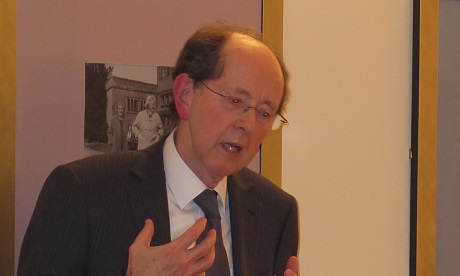An English organisation says most churches can have a viable future.
There are provisos, however. For instance, congregations must be willing to engage with their communities.
Sir Paul Britton (pictured), who chairs the grants committee for the National Churches Trust (NCT), says England’s “splendid inheritance of churches is under great threat from dwindling congregations, probably to be accentuated by the current pandemic.”
He is concerned that many churches will never reopen after the pandemic. He says some Anglicans, especially, are hoping this will enable them to dispense with buildings they regard “as an encumbrance”.
Britton says the organisations campaigning for England’s churches and chapels “has never been greater”.
He is optimistic that the great majority can have a viable future, provided that their congregations are willing to engage with their communities and make these buildings useful for both secular and religious purposes.
An NCT report, The House of Good (2020), estimates the church buildings’ economic and social value to be £12.4 billion each. Averaging around £300,000 per church building, the report says these buildings “provide the social glue that keeps our communities together,” the report concluded.
Although the NCT receives no regular direct funding from the Government or church authorities, it was given £1.7 million in grants last year. The grants are for urgent repairs to churches and chapels, essential maintenance and installing community facilities.
The NCT notes there is a particular threat to pipe organs in churches and chapels. It would like a new strategy to identify the most important instruments at risk and to find new homes for these, — or at least safe storage until a new home can be found. Many are at risk of deterioration because they are in abandoned churches. Many others have been vandalised.
Journalist and presenter Huw Edwards, himself an organist, says communities shouldn’t be deflected by the ignorance or indifference of others.
“This is a vitally important part of our cultural story. These church and chapel organs are a direct link with previous generations — our ancestors — whose cultural values and priorities are all reflected in the buildings they funded. They are a musical window into a very different world.”
More than 80 percent of NCT funding in 2020 was used to support places of worship in England, where the majority of the UK’s church buildings are situated. It provided 259 grants, totalling £1,718,419, to keep churches and chapels in good repair and with up-to-date facilities.
Twenty-six churches were removed from Historic England’s Heritage At Risk Register with the help of grants. Forty percent of the total value of grants supported churches located in the most deprived areas of the UK. Demand for grants was described as extremely high: 722 applications were received — an increase of 40 since 2019.
Source
- Church Times
- Image: Twitter
News category: World.




